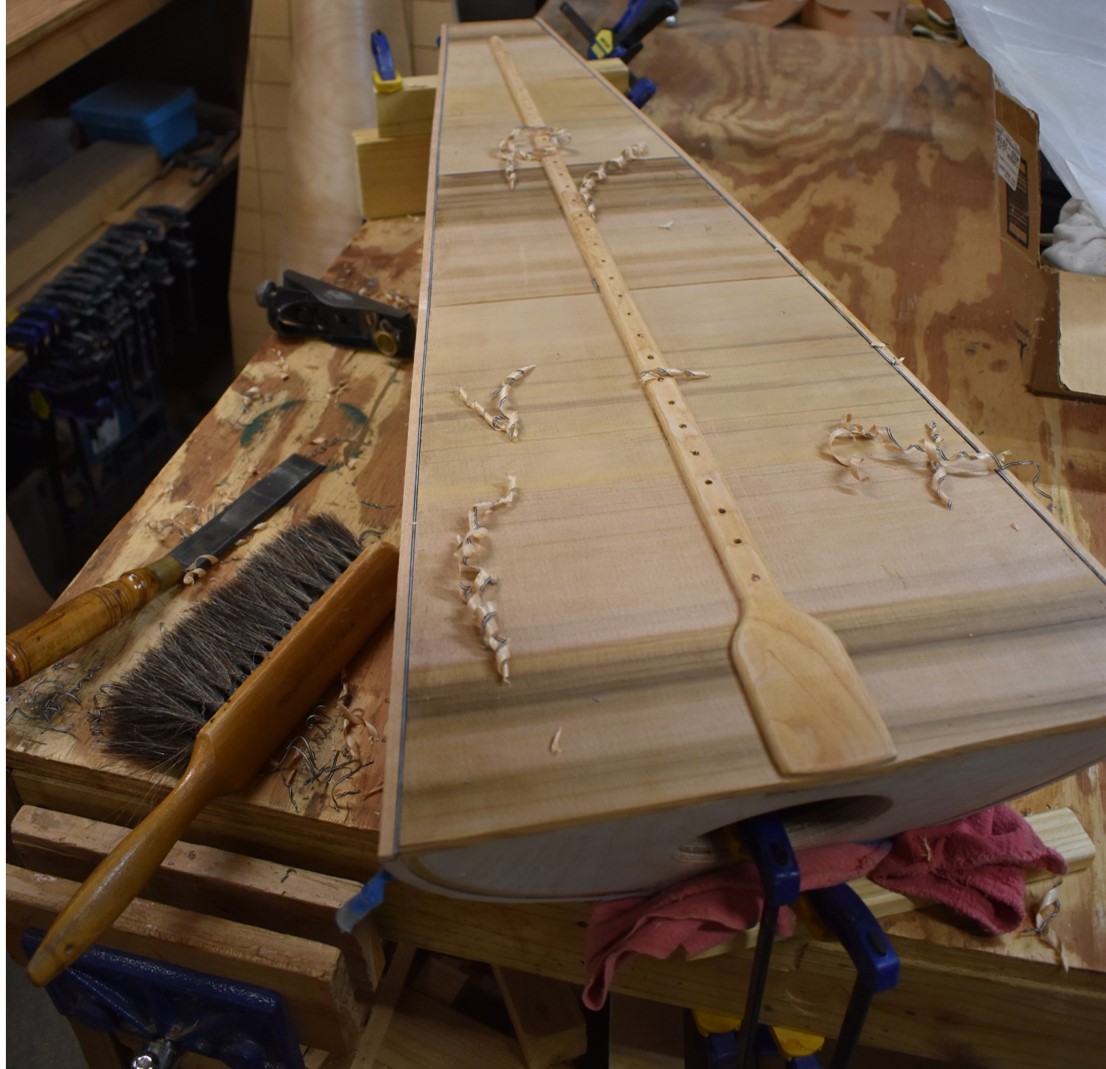WOODS USED IN MY HARPS
Hardwood
The available species of hardwood for the neck and pillar of my harps are Walnut (Black or Claro), Curly Cherry, or Maple (Curly or Quilted).
For the outer string rib, the binding (the trim that runs down the front sides of the soundbox), and the soundbox cap, the available hardwoods are Bocote, Castello Boxwood, Curly Maple, Mahogany, and Osage Orange (Bois d'Arc). You may also choose to use the same wood for the binding as that chosen for the pillar and neck.
The round back of the sound box is a lamination of hardwood veneers, with the outer veneer matching the wood used in the neck and pillar.
The choice of hardwood for the neck and pillar of the harp have no effect on the sound of my harps. The majority of the harp’s sound emanates from the soundboard (from both the front and the rear), and the remainder from the strings themselves.
Below you can see the three woods together for comparison (from left to right:Quilted Maple, American Black Walnut, Curly Cherry)
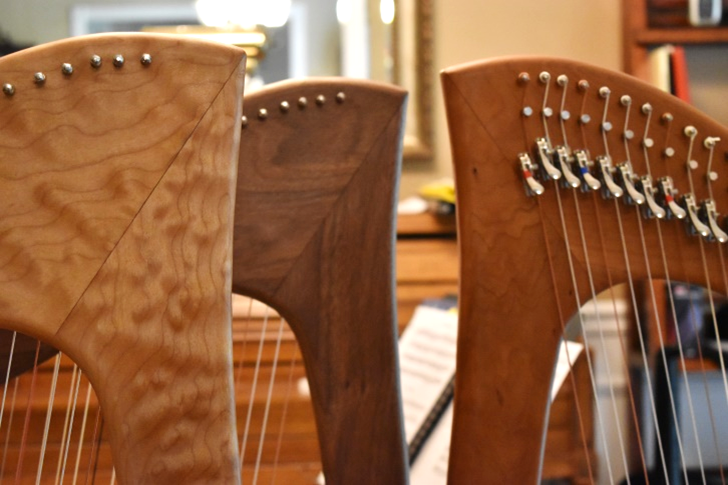
And the view from the back:
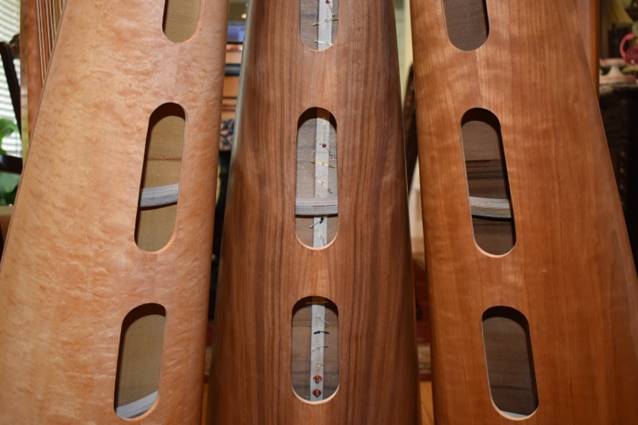
Softwood
I use hand-selected, luthier-grade Cedar, and Spruce quartersawn tonewoods for the soundboards on my harps. I use solid wood (no veneers) for the same reason luthiers of other stringed instruments have for hundreds of years – they create the most pleasing sound from the energy imparted to them by the strings. The wood used for the soundboard has the greatest effect on the sound of the harp, after the string material. Western Red Cedar has the warmest/darkest sound of the three woods. Engelmann Spruce has the crispest/brightest sound, with Port Orford Cedar falling between the two. The terms bright, dark, warm, and crisp are all subjective approximations. Hearing the different soundboard woods side by side is the best way to decide which wood you prefer.
Seen below (from left to right) are a Western Red Cedar soundboard with a Mahogany string rib, and a Port Orford Cedar soundboard with a Quilted Maple string rib:
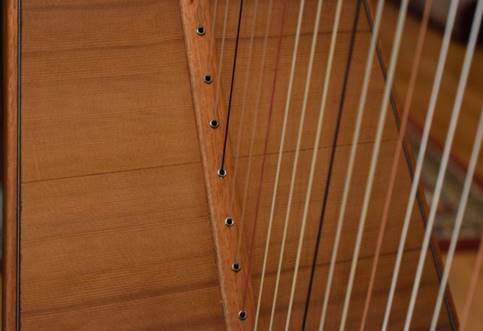
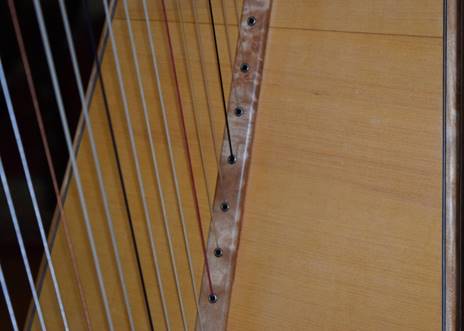
Finish
Previously, I used a water-based acrylic (plastic) finish, of which many thin coats were sprayed on the harp, but I never acheived the natural color, grain and finish I have seen in furniture created by craftsmen of the 18th and 19th century. After speaking with a master furniture restorer and builder, I now use a hard wax oil finish, which better penetrates and protects the wood, while bringing out the intricate colors and patterns of the wood itself. After the finish has cured, it is hand rubbed to its final finish. The initial finish application, and final rub out are very labor intensive, but visually and tactilely rewarding. The results must be seen in person to appreciate.
